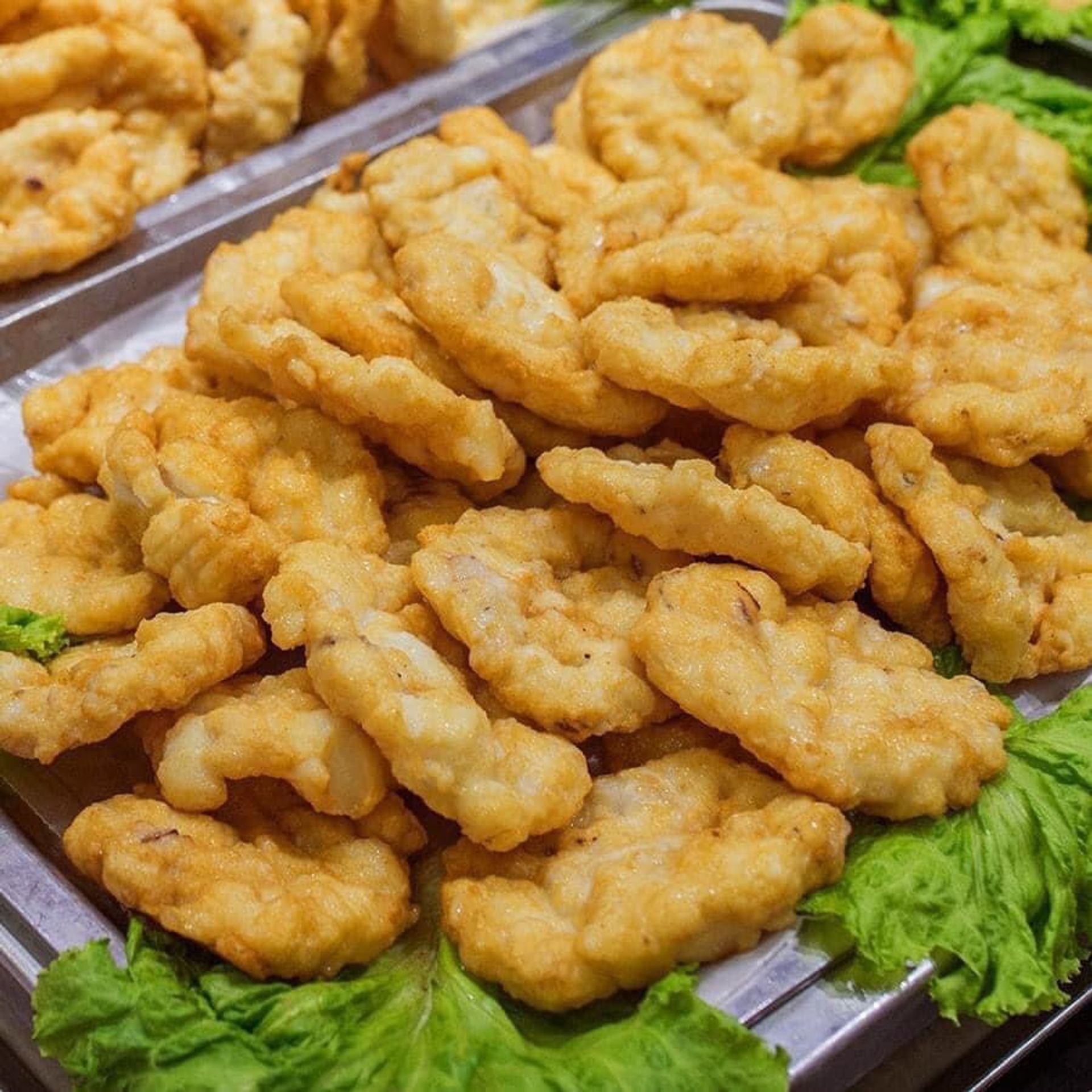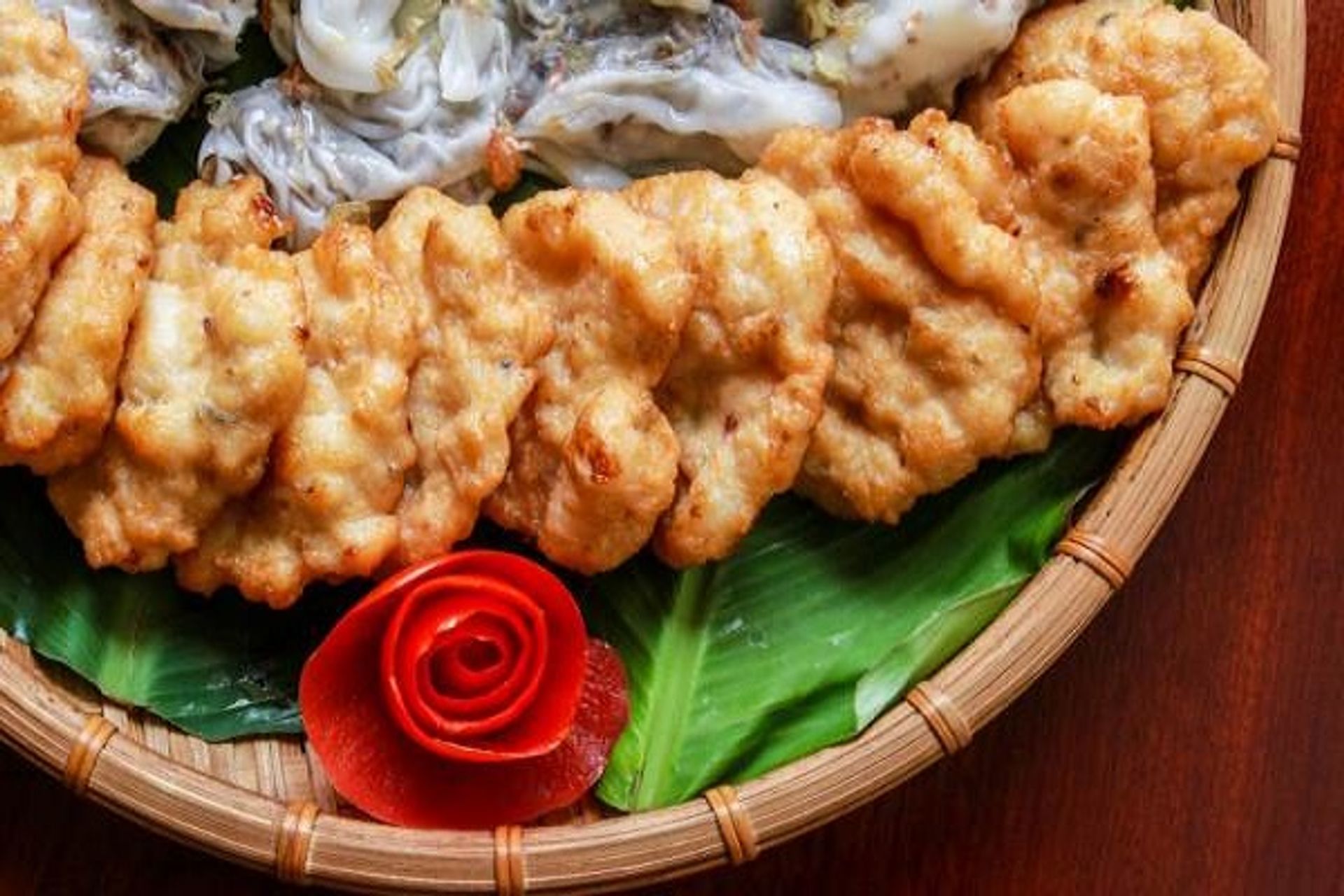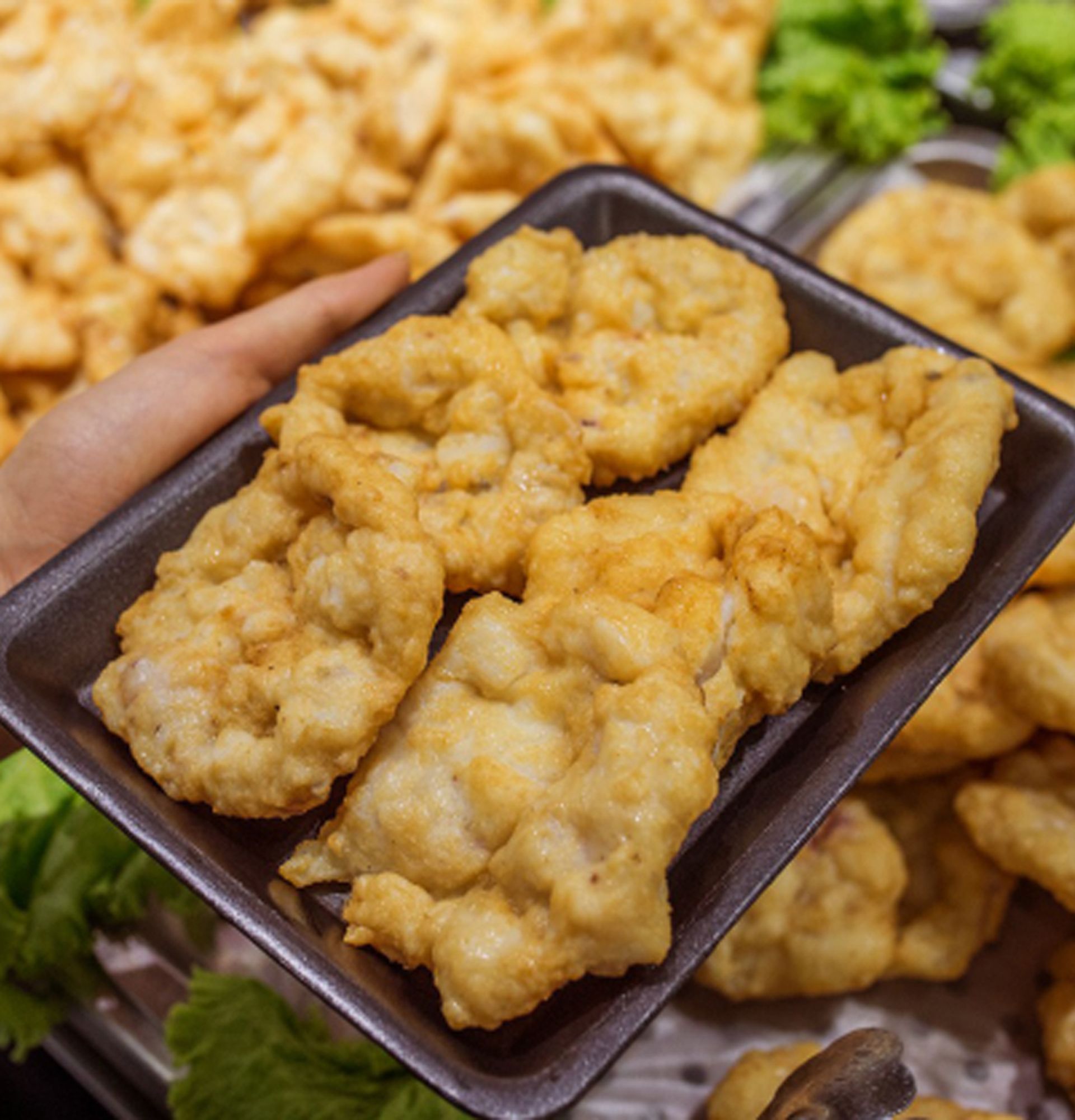Grilled squid is a specialty dish of Ha Long land made from the main ingredient of squid meat that is pounded or pureed, shaped into a round cake and then fried. Grilled squid is known as the most famous specialty of Ha Long, often bought by tourists from near and far as gifts. Squid rolls are loved by many people because of their delicious taste, long preservation and meticulous execution process.
Ha Long squid cake is especially delicious, compared to other places, it has its own unique characteristics that cannot be found anywhere else. This comes from the main ingredient to make squid cake – a type of squid that lives in the waters of Ha Long. Only the squid that lives in the waters of Ha Long can the meat be sweet and chewy. Perhaps it is for this reason that Ha Long squid cake can exist and become more and more famous.
After you have bought the squid rolls, you just need to fry them until they are evenly cooked, when the pieces are cooked, they will have an eye-catching golden color, and the spreading scent is extremely stimulating. Grilled squid served with lemon garlic chili sauce or sweet and spicy chili sauce with hot rice or vermicelli, or as a drink, will surely conquer the taste of all your family members!
-
Price: 330,000 VND – 800,000 VND/kg of pounded squid
-
Address: Ong Ba Seafood – Sunworld Ha Long Park Walking Street, Lot C122, Ha Long Street, Bai Chay Ward, Ha Long City, Quang Ninh
-
Shop Thoan, Hien Nhung – kiosk 36, 37 Ha Long market 1, Ha Long city, Quang Ninh
Source: Collected internet.
Vietnam is a country on an S-shaped strip of land, located in the center of Southeast Asia, in the east of the Indochina peninsula, to the north by China, to the west by Laos and Cambodia, and to the southeast overlooking the sea. East and Pacific. Vietnam's coastline is 3,260 km long, and its land border is 4,510 km long. On land, from the northernmost point to the southernmost point (as the crow flies) is 1,650km long, from the easternmost point to the westernmost point the widest place is 600km (Northern region), 400km (Southern region), the narrowest place is 50km (Quang Binh).
The North and North Central regions have a humid subtropical climate with 4 seasons: Spring, Summer, Autumn, and Winter. The Central and South Central regions have a tropical monsoon climate, the extreme South Central and Southern regions have tropical savanna characteristics. At the same time, it is directly influenced by the trade monsoon climate, which often blows in low latitudes. The South often has a tropical savanna climate, hot and humid with two seasons: dry season and rainy season (from April-May to October-November). Every year, the cold and humid winter typical of the North contrasts with the warm atmosphere of Tet and spring in the South.
Vietnam, whose national name is the Socialist Republic of Vietnam, is a socialist country located at the eastern tip of the Indochina peninsula in Southeast Asia, bordering Laos, Cambodia, China, and the sea. East and Gulf of Thailand. The territory of Vietnam has been inhabited since the Paleolithic era, starting with the states of Van Lang and Au Lac. Au Lac was annexed by the Trieu Dynasty in the North in the early 2nd century BC, followed by a period of Northern domination lasting more than a millennium. The independent monarchy was re-established after Ngo Quyen's victory over the Southern Han dynasty. This event paved the way for independent dynasties to succeed and then repeatedly win against wars of invasion from the North as well as gradually expanding to the south. The final period of Northern domination ended after the Lam Son insurgent army's victory over the Ming Dynasty.
Ao Dai not only enhances the gentle and loving beauty of Vietnamese women, but it also shows discreetness, modesty and strange charm. Ao dai today is becoming more and more diverse in shape, color, and pattern, but it still retains its traditional appearance.


